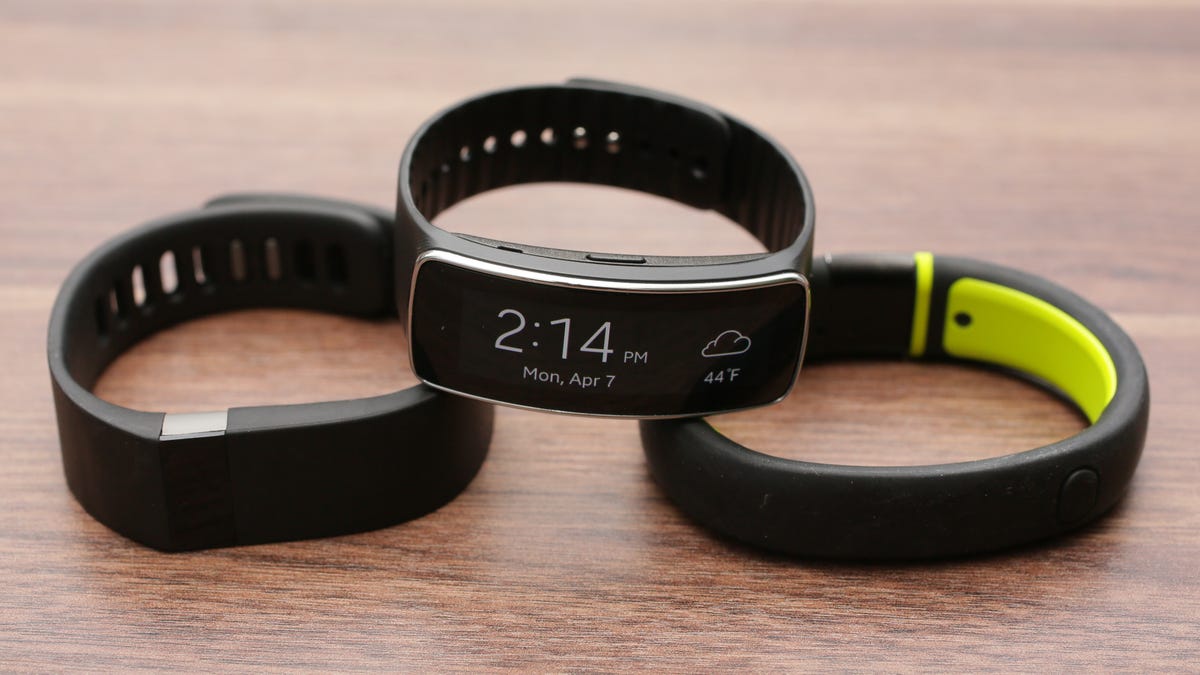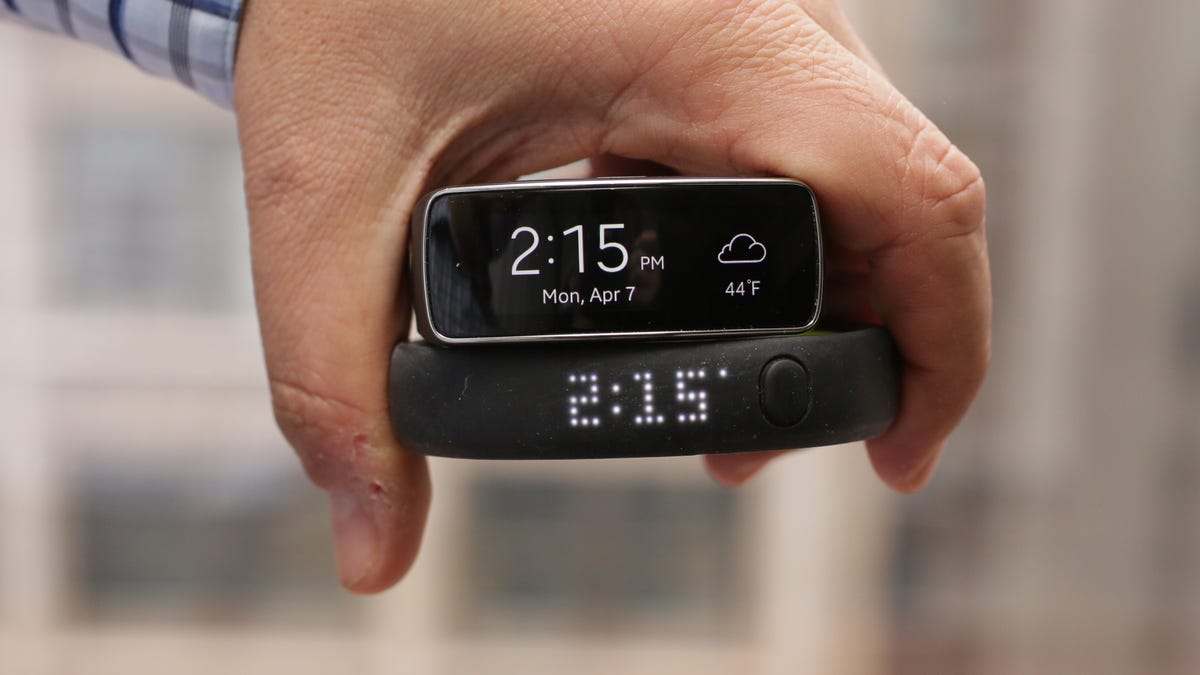
Sarah Tew/CNET
So you want to buy a fitness tracker? Maybe you should wait on that.
Suddenly, it looks like a good handful of fitness band companies are in a state of flux. Nike’s future in FuelBand hardware is coming to an end. Fitbit is lacking its top-end product, the Fitbit Force , after a recall this winter. Basis has been acquired by Intel.
What does all this mean? There are plenty of others out there: those by Withings, Jawbone, Misfit, Garmin, and now Samsung. But bands by Sony, LG, Razer, and many others expected by the spring still aren’t here yet.
Does this mean fitness trackers are facing a downward spiral? It feels like the wrist-worn pedometer, the darling of 2013, has suddenly reached a low point. Phones track steps much more easily than before; and even then, the 10,000-step-a-day measurement goal is really helpful at first, but gets old quick once you’ve maintained your routine.
People still buy fitness bands. But the landscape of what defines them is clearly in major evolution. If fitness bands — and all wearable tech gadgets — are truly ever going to work long-term, both the hardware and software ends are going to need to get a lot better. And companies are going to need to specialize in one or the other.
A spring for wearable tech






MP3 players of fitness?
“There’s probably an analogy with MP3 players,” says Sonny Vu, CEO of Misfit Wearables, maker of another fitness tracker on the market, the Shine. “Even more so with GPS units. The latter are still bought by some people, perhaps because of the various benefits of having dedicated hardware. In a similar vein, activity trackers will need to provide for use cases that are compelling enough to justify their existence.”
I keep getting reminded of MP3 players, too, because back in the early days, makers of music players tried to tie their players into custom apps and services, too. Every player had its own music app hub for syncing, and some even tried their own custom music file types. Eventually, most people ended up listening on their phones, because a standalone device didn’t make sense anymore. And yet, my brother-in-law still uses his iPod Shuffle at the gym.
“They’ll need to do more, or they need to do what they do better,” says Vu of future fitness trackers, referring to features like longer battery life and more modular design that the Misfit Shine touts over other products. That’s true, but the landscape is about to get a lot more crowded fast.


Sarah Tew/CNET
Lots of hardware, not enough good software
It’s just funny that I see news of Nike moving from hardware to fitness software, because I just finished reviewing a Samsung fitness band that desperately needs better software, but has impressive hardware.
Serious hardware experts are entering the wearable landscape. That’s inevitable. But not all of these companies are good at software, too. Samsung’s Gear Fit is the latest and best example: it’s dripping in features but lacks the software to make it sing, especially in terms of fitness.
So, Nike working on an API? Companies like Fitbit and Withings finally allowing phone pedometer data to sync with their apps? That’s good news. After reviewing a handful of these fitness trackers, it’s clear some are doing better than others. Sometimes it’s the physical design, but it’s usually because of the software. Somebody needs to be focusing exclusively on that part of the equation. There are plenty of standalone apps out there that are already pretty good — RunKeeper, MyFitnessPal, and Argos, for starters — and tie into multiple platforms. But these are phone apps, mostly, that don’t fully extend yet onto the bands themselves. For the most part, we’re still stuck with what individual fitness band manufacturers force you to sync with.
Here’s what hardware makers don’t need help with: making hardware. I like the FuelBand’s design. But I won’t like it nearly as much once serious players like Apple and Google start changing the game.
Fitness software needs to be smarter
I used a FuelBand for months. And I was trying to lose weight. I’d largely succeeded throughout 2013, but I hit a wall when it came to wearables. Also, part of it was my own fault. Beyond the whole counting-your-steps contest, bands just don’t do a great job of helping you get more active beyond that. The FuelBand came closer than many, but its idea of “intensity” ended up meaning relative motion of a band on your wrist. It didn’t really help coach me to be usefully active.
Heart-rate monitors are another step, but most software doesn’t know how to take advantage of this data yet. The Gear Fit was able to tell me to “speed up” or “slow down,” but it didn’t translate into information I could track or make sense of afterward. It became a dumb smart band.
Fitness is just one small feature
Fitness trackers have become the most purchased devices in wearable tech, but that’s just because they’re the most practical right now…and the most affordable. A fitness band can help track steps, which instantly means something to people who may not care at all about smartwatches. And, most of them cost less than $150.
What we use smartbands or smartwatches or wearable sensors for in the future is bound to evolve. Maybe it’s gathering information about what’s around me, or managing security, or being an deep medical companion, but step-counting just isn’t a big part of that future. Fitness does mean more than in tech, somewhat: GPS tracking, heart-rate monitoring, and maybe a whole lot more. But even then, staying healthy or getting healthy is just one part of the wearable equation. “Perhaps you’ll probably see more trackers try to edge closer to smartwatch functionality,” says Vu. I agree, at least as far as making fitness one feature among many on next-level wearables.
Nike leaving hardware is a smart move
Unless activity bands cost $50 and become a disposable fashion accessory, there’s no future in them until they become smarter. Nike’s relationship with Apple clearly points in a direction that at least supports whatever Apple will unveil down the road, but for companies like Nike that have a very specific view of fitness, maybe it’s best to think small. Be an app, and run on everything. Be a Netflix, or a Spotify. Let others choose you, and choose the hardware separately. I don’t want a band for every app. No one does.



